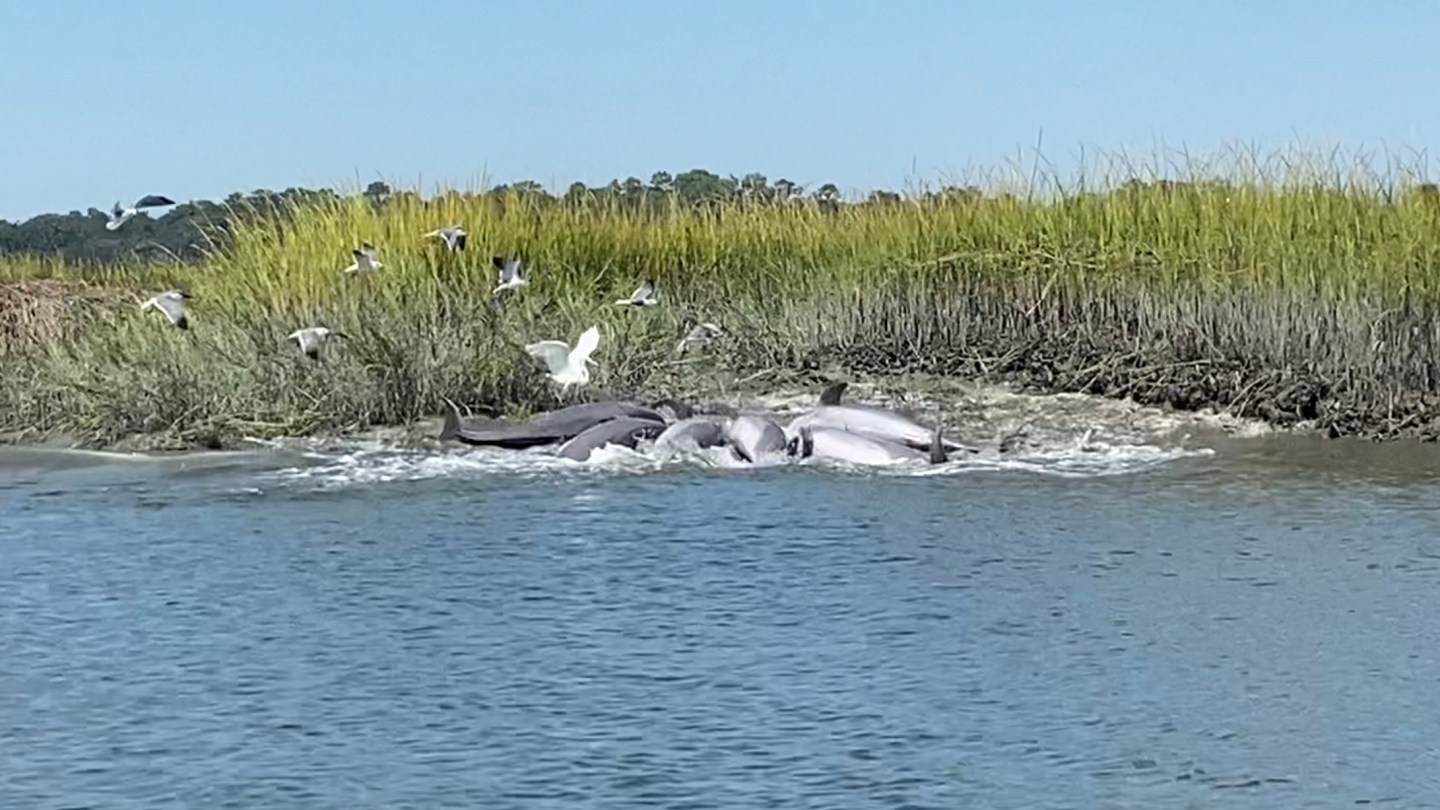
Dolphins Feeding at low Tide
Strand feeding is a phrase that you may hear while on Hilton Head Island. It comes up in conversation both with visitors and the lucky residents that get to call the Lowcountry home because it relates to everyone’s favorite local, the Atlantic bottlenose dolphin. The Lowcountry is one of the rare places in the world where you can see a dolphin perform this unique feeding practice.
But what exactly is strand feeding? Dolphin strand feeding has earned its name because of how the dolphins quite literally strand themselves onto a bank to feed. At first glance or from a distance, it may just look like splashing in the water. Do not be fooled that this splashing is chaos. It is far from it. The hunting practice that these dolphins are engaging in is sophisticated and requires impeccable timing and teamwork. Dolphins are inherently social creatures and the ability to team up with each other for this type of feeding is just one way that exemplifies their incredible communication skills.
After communicating the opportune moment, a group of two to six dolphins, maybe more, will team up underwater to herd a group of bait fish towards the shore. When the fish are tightly grouped together, the dolphins form a line and rush towards the bank creating a wave that hurls the fish on land. The more dolphins present, the bigger the wave. In a synchronized line, the dolphins follow the wave and thrust themselves with the fish to gobble up what that they have pushed out of the water. Once they feel that they have eaten as much fish as possible, they wriggle back into the water using their tail. If the conditions are right and there are enough fish present, the dolphins may continue this cycle in the same spot a couple of times.
While extremely effective, the practice of strand feeding can be dangerous. The shallow creek banks of the Lowcountry are riddled with oyster beds that are as sharp as razors. Dolphins must plan accordingly to not strand themselves on such dangerous terrain. If getting sliced by sharp obstacles was not bad enough, it is not the only risk when coming out of the water. Dolphins may strand themselves too far out of the water and may get stuck on land. They are now susceptible to being bothered by birds that have piggybacked off their hunt, sunburns, exhaustion, or even death. The risk proves to be worth the reward for Hilton Head Island dolphins because it is a generational behavior that they teach each other year after year.
No studies have suggested that this is an instinctual trait for dolphins. The feeding style is a completely taught behavior. They always strand feed on their right sides; however, no one is 100% convinced of the reason why. Scientists believe that physiology is involved since there is no recorded dolphin strand feeder that happens to be a lefty. Dolphin calves are taught by their mother to strand feed on steep banks, so they can slide back into the water with some ease. The concept is somewhat similar to an experienced skier teaching a beginner on a bunny slope, but with an opposite incline for the safety of the less experienced. While calves can be seen practicing and learning the hunting style, they do not strand feed with adult dolphin pods. They run the risk of getting crushed by the adults and the wave would likely strand them too far out of the water. Once they are large enough and have had the practice, they join their pod.
One of the best and only ways to see this magnificent natural occurrence is on a dolphin tour at low tide. A professional and experienced guide from Island Skiff Adventure Tours is aware of the necessary conditions and locations where dolphins are most likely to be seen strand feeding. For a chance to experience this magic firsthand, please refer to the tide chart to schedule a low tide tour before booking your adventure.
